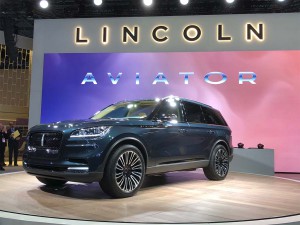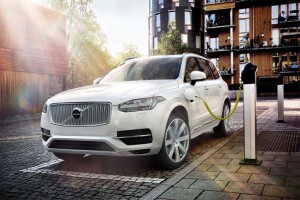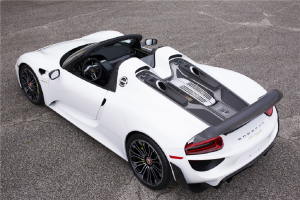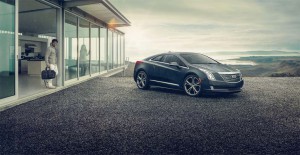When the first hybrids came to market nearly two decades ago, the emphasis was on mileage, the original Honda Insight delivering as much as 70 miles per gallon, albeit at the expense of what might be described as the fun-to-drive factor.
That approach carried over as more advanced, battery-based models came to market – and as luxury brands started to plug in with vehicles like the Cadillac ELR. Based on the Mainstream Chevrolet Volt, Caddy’s first plug-in hybrid was lavishly equipped but took almost 10 seconds to get from 0 to 60.
A visit to this year’s New York Auto Show will reveal a wide array of PHEVs, and among mass market brands, like Chevy, Honda, Hyundai and Toyota, fuel economy is still the primary target. But it’s another matter entirely among luxury brands, such as BMW, Lincoln, Mercedes-Benz and Volvo. There’s no question they’re also using battery power to boost mileage, but they’re also putting a premium on performance.
(Live from NY! Click Here for our complete coverage of the 2018 NYIAS.)
In fact, with many of the new plug-in models coming to market, manufacturers are actually delivering more power than with traditional gas-powered packages. That’s the case with Volvo whose T8 Twin-Engine package delivers 400 horsepower in the big XC90 sport-utility vehicle. Its gas models make anywhere from 258 to 316 hp. Even though it’s the fasted model, the T8 version still delivers an EPA-estimated 53 MPGe while also managing 27 miles in all-electric mode.
According to data from data tracking site Edmunds, there are now two dozen luxury plug-in hybrids in the U.S. and many more available globally. Mercedes-Benz alone finished 2017 with 10 PHEVs in its worldwide line-up – not all of them available in the States.
The reason is obvious, as Cadillac learned: luxury buyer may like the concept of going green, according to analyst Dave Sullivan, of AutoPacific, Inc., but they don’t want to sacrifice the sort of things that they would normally expect from a high-line product, including performance.
Lincoln will follow the Volvo model when it brings the new Aviator to market next year. There will be two powertrain options available, officials with Ford’s luxury brand announced at the NY Auto Show, where a “production intent” version made its debut. Details were sparse, but they did note that the “base” car will feature a new twin-turbo V-6 engine that is widely expected to deliver somewhere north of 300 hp. But the top line powertrain package will not only retain that V-6 but pair it with an electric drive system that will make it the option of choice for performance fans.
Though electrified drivetrains may have gotten off to a bad start, at least for those who like muscle, the reality is that electric motors can deliver plenty of wheel-spinning power – and, better yet, they deliver maximum torque the moment they start to spin, unlike naturally aspirated and turbocharged engines that have to rev up.
Three of the fastest vehicles ever built: the LaFerrari, the Porsche 918 Spyder and the McLaren P1, all relied on Formula One-derived hybrid technology, and Aston Martin and other manufacturers are set to follow similar strategies with some of the hypercars they’re now developing.
Plug-ins have another advantage. A growing number of countries are putting stiff new emissions and mileage standards in place, notably including China, now the world’s largest luxury car market. Those rules are making it increasing difficult for conventional, gas-powered models. Some cities, such as London, plan to entirely ban vehicles that aren’t operating in zero-emissions mode.
Key manufacturers now offering Plug-In Hybrid models include:
Audi has announced ambitious plans to electrify and will soon launch an all-electric SUV comparable to its current Q5. Expect more plug-ins, as well, to flesh out the current PHEV model, the A3 Sportback e-tron.
BMW has announced a major electrification program but also has launched plug-in versions of four modes. That includes the 3-, 5- and 7-Series sedans, as well as the big X5 sport-ute.
Cadillac was one of the first luxury brands to add a PHEV, but with its sluggish performance, the ELR bombed. It’s gaining better traction with the sportier, PHEV version of its flagship CT6 sedan. It’s produced in, and primarily targeted at, China, but it is available in the U.S. where sales have been model.
Lincoln has offered conventional hybrid technology for some time, but it will be adding that plug-in version of the Aviator in 2019 – and it neatly coincides with the brand’s push to grow sales in China.
Mercedes-Benz offers more plug-ins than any other brand, 10 all told. Not all are available in the U.S., though the list is growing. That includes the GLE 550e sport-utility vehicle and the C350e sedan. They’re both the most powerful versions of their respective models.
Porsche has plug-in versions of its Panamera four-door sports sedan, as well as the Cayenne SUV. The Panamera Turbo S E-Hybrid is a fire-breather, at 680 hp. The Cayenne S E-Hybrid delivers 95 more hp than the V-6 version of the ute.
Volvo currently offers the T8 engine in its XC90 ute, S90 sedan and XC60 sport-utility vehicle. It uses a layout that powers its front wheels by their gas engines and the rear wheels by electric power. All future models will be electrified, meaning hybrid, plug-in or all-electric, Volvo recently announced.
(Adding PHEVs and BEV key to Caddy’s strategy, says brand boss. Click Here for more.)





Credit Tesla with the change in emphasis to performance from economy.